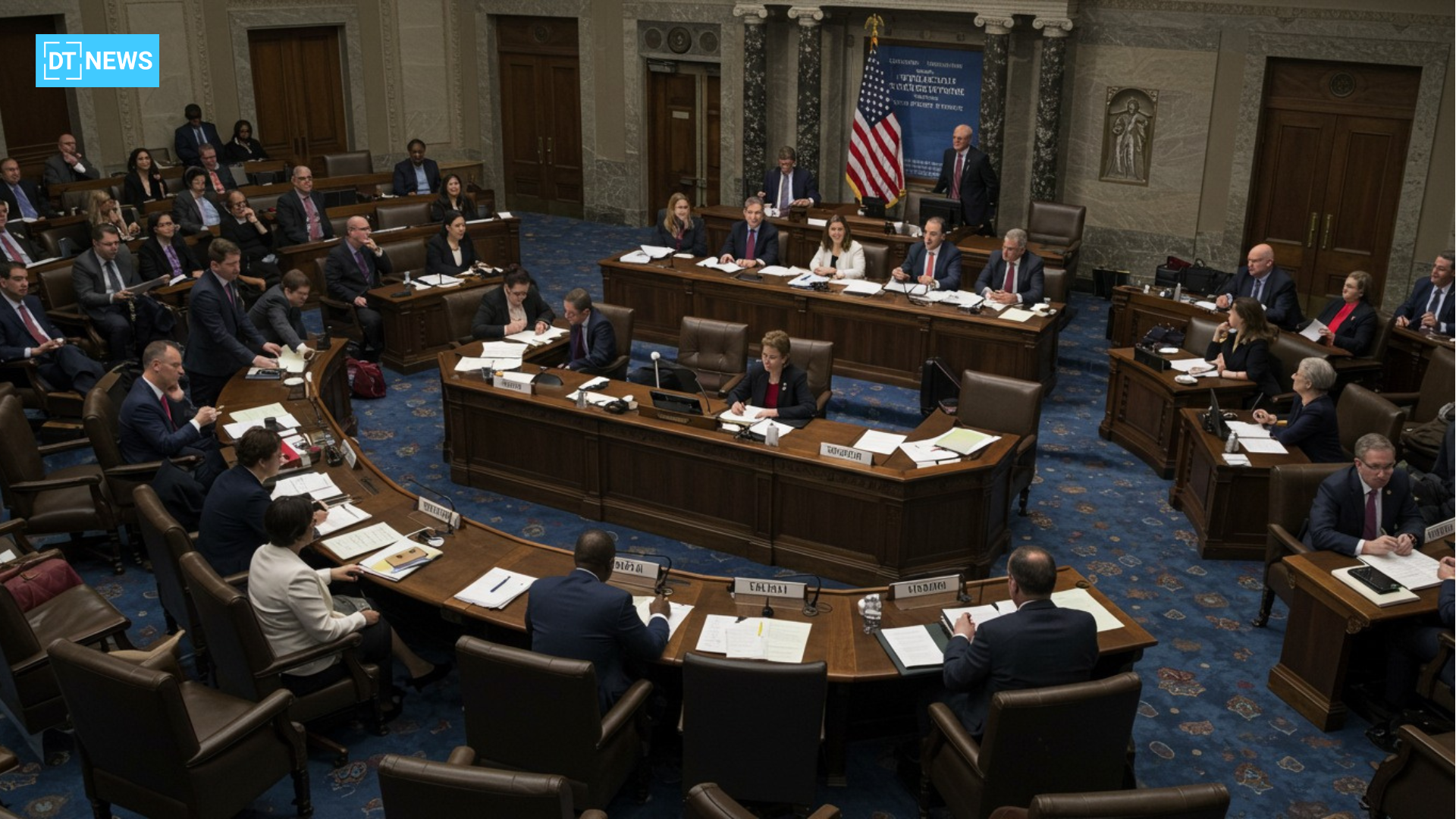U.S. Congresswoman Maxine Waters introduced a draft bill to create stability regulations for stablecoin issuers across the country. The licensing requirements under the proposed bill emphasize that stablecoin issuers should preserve a match of reserves that aligns perfectly with outstanding stablecoins. Under this proposal, consumers gain additional protection while financial firms are forbidden from controlling stablecoin release operations.
- New Stablecoin Law Gains Political Support
- Regulatory Framework for Stablecoin Issuers
- Penalties for Unauthorized Stablecoin Issuance
- Consumer Protection and Financial Stability
- Bipartisan Efforts to Regulate Stablecoins
- Conclusion
- FAQs
- What does the proposed stablecoin bill aim to achieve?
- How will the bill impact stablecoin issuers?
- What penalties will unauthorized stablecoin issuers face?
- Why is consumer protection a key aspect of the bill?
- How does this bill differ from other proposed stablecoin regulations?
- Glossary
- Reference
New Stablecoin Law Gains Political Support
The new law secures wide political backing, together with recommendations from the Treasury Department and Federal Reserve. The bill requires full adherence to anti-money laundering and counter-terrorism financing regulations for regulatory purposes. The regulation maintains that penalties exist for unstamped stablecoin distribution, including monetary penalties and incarceration.
The proposed bill follows Republican congressional members French Hill and Bryan Steil in introducing the STABLE Act of 2025. Moreover, Senator Bill Hagerty presented the GENIUS Act on February 4 as a proposal to create federal-level stablecoin regulations. Stablecoin policies are the focus of a CEO Forum run by the CFTC as the organization meets with industry leaders.
Regulatory Framework for Stablecoin Issuers
Both bank and nonbank stablecoin issuers must fulfill specific licensing conditions established by this bill, allowing the Federal Reserve to oversee compliance efforts. Federal Reserve employees will monitor compliance as part of their role to verify that issuers meet federal rules. Authorized entities in their entirety, become the only entities with the power to issue payment stablecoins within the country.

Payment stablecoins must possess liquid reserves, either through US currency deposits, insured bank accounts, or Treasury bills. The new rule has been established to minimize financial dangers while protecting digital asset market stability. Providers who do not follow regulations will receive substantial fines and potential criminal penalties.
Under this bill, stablecoin firms cannot allow individuals with criminal backgrounds to serve as executives in their organizations. This safeguard has been established to shield consumers from fraudulent acts and financial crimes. Part of the new legislative requirements states that issuers must follow US sanctions regulations.
Penalties for Unauthorized Stablecoin Issuance
The proposed legislation establishes intense consequences for unauthorized stablecoin issuance by individuals or entities. People who issue stablecoins without authorization are subject to penalties reaching $1 million for each case of violation. The law provides possible prison sentences of up to five years as a punishment.
Extensive monitoring will be implemented to prevent financially illegal conduct. The Federal Reserve obtains enforcement authority through this legislation to work with the Treasury Department, SEC, and CFTC. Consumer protection organizations will monitor all aspects of stablecoin transaction processes.
The bill establishes strict legislation through which issuers of unregulated stablecoins face immediate severe penalties as a deterrent. Digital asset trust increases because issuers face accountability through this approach. The introduced measures support current initiatives to develop a secure and transparent financial framework.
Consumer Protection and Financial Stability
The bill includes strong consumer protection provisions to prevent financial harm. It prohibits non-financial companies from owning stablecoin issuers to separate banking from commerce. This rule ensures that financial institutions remain independent of commercial interests.
Additionally, issuers must follow strict reporting requirements to maintain transparency. They will be required to disclose reserve holdings and financial conditions to regulators. These measures aim to enhance financial stability and reduce the risk of economic disruptions.
The legislation also promotes innovation while addressing consumer risks. It seeks to foster responsible growth in the stablecoin industry by implementing clear regulatory guidelines. These rules provide investors and users with greater confidence in digital assets.
Bipartisan Efforts to Regulate Stablecoins
The bill reflects bipartisan cooperation in establishing stablecoin regulations. It includes contributions from both Democratic and Republican congressional staff. Lawmakers aim to create a balanced framework that supports financial innovation while ensuring regulatory oversight.

Senator Bill Hagerty’s GENIUS Act also seeks to regulate stablecoins through a separate legislative proposal. Additionally, Representatives French Hill and Bryan Steil’s STABLE Act of 2025 presents another approach to stablecoin regulations. These ongoing efforts highlight the increasing focus on establishing a comprehensive legal framework for digital assets.
Furthermore, industry stakeholders are engaging with regulators through discussions and forums. The CFTC’s CEO Forum will bring together major crypto companies to address stablecoin-related issues. These collaborative efforts signal a growing push for clear and effective regulations.
Conclusion
The introduction of stablecoin regulations marks a significant step in financial oversight. Waters’ bill proposes a structured framework to ensure compliance, consumer protection, and financial stability. Ongoing legislative efforts and industry engagement indicate a broader commitment to regulating digital assets.
These regulations, supported by both political parties, establish safe transactions for stablecoins. The bill enforces strict regulations that defend consumers, prevent dishonest activities, and support transparent operations. Lawmakers and regulators will develop improved policies that correspond with evolving financial technology developments.
FAQs
What does the proposed stablecoin bill aim to achieve?
The bill seeks to regulate stablecoin issuers by establishing licensing requirements, ensuring transparency, and enforcing strict compliance with financial laws.
How will the bill impact stablecoin issuers?
Issuers must back their stablecoins with reserves, comply with regulations, and obtain legal authorization.
What penalties will unauthorized stablecoin issuers face?
Violators could be fined up to $1 million per offense and face imprisonment of up to five years.
Why is consumer protection a key aspect of the bill?
The bill ensures financial stability by preventing non-financial companies from controlling stablecoin issuers and enforcing strict regulatory oversight.
How does this bill differ from other proposed stablecoin regulations?
It incorporates bipartisan input and aligns with existing regulatory frameworks while focusing on consumer protection and financial security.
Glossary
Stablecoin: A digital currency pegged to a stable asset like the US dollar.
Federal Reserve: The central banking system of the United States.
Treasury Bills: Short-term debt securities issued by the US government.
Commodity Futures Trading Commission (CFTC): A federal agency regulating derivatives and commodity markets.
Anti-Money Laundering (AML): Laws and regulations designed to prevent illegal financial activities.
Counter-Terrorism Financing (CTF): Counter-terrorist financing (CTF) aims to prevent illegal funds from reaching terrorist groups by disrupting their financial networks.



















































































































